Six human parasites you definitely don't want to host
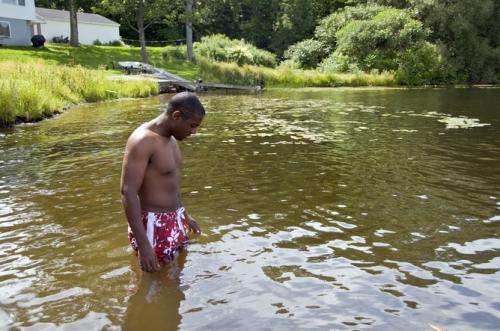
Parasites are fascinating. They are uniquely adapted to survive, in some cases through very complex life cycles. There's also research to suggest that some may even change the behaviour of hosts to assist them in their quest to reproduce. But you wouldn't want to get one. Here are six of the most gruesome.
Giardia
Giardia duodenalis (or Giardia intestinalis, Giardia lamblia) is one of the most common protozoan parasites of humans and mammals.
You're usually infected by ingesting the cyst stage of the parasite from water or food contaminated with infected faeces. Direct person-to-person spread can also occur from poor hygiene.
Once inside the body, the microscopic cysts develop into feeding stages (trophozoites) which multiply and colonise the small intestine. After passing through the intestines, they form new cysts that are shed in faeces, ready to infect new hosts.
Some infected people go on to develop giardiasis, an intestinal illness characterised by profuse pale diarrhoea, abdominal cramps, flatulence, fatigue and weight loss.
Giardiasis is found worldwide. Most cases are among travellers to areas where it's common, children in day-care, or in people who drink untreated water. Giardiasis commonly resolves in a few weeks without treatment but in some people it persists and can cause malnutrition.
Guinea worm
Guinea worm (GW), Dracunculiasis medinensis, is a parasitic roundworm that causes Guinea Worm Disease (GWD) among people in poor rural areas with little access to clean water or health care.
Guinea worm has a complicated life cycle involving minute Cyclops water fleas. You pick up GW by drinking untreated water containing Cyclops infected with GW larvae. Cyclops die in the stomach, releasing the larvae which penetrate the stomach and intestinal wall, before moving into body tissues to mature into adults. After mating, the males die and females (up to 1m long x 1-2mm thick – think Angel hair pasta) migrate through the tissues to the surface of the skin, often in the feet/lower legs.
Infected people don't usually have symptoms initially. But, about a year later, a painful blister forms which ruptures, often after immersion in cool water. The female worm emerges from the ulcer releasing millions of larvae which are then eaten by other Cyclops.
People may have more than one worm. There is no available treatment or vaccine. Instead, the worm is removed slowly by winding it around a small stick after it emerges: this may take weeks.
GWD isn't fatal but the ulcer is intensely painful and debilitating and secondary bacterial infections can lead to blood poisoning. Livelihoods are affected if people are unable to stand or walk.
Thankfully, eradication programmes have left GWD relatively uncommon. Just 25 years ago, more than 3.5m people in 20 countries in Africa and Asia had GW. In 2012 there were fewer than 600 reported cases.
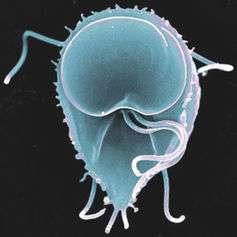
Dermatobia hominis (human botfly)
Dermatobia hominis, or human botfly, is found in tropical areas of Central/South America and the Caribbean and is one of several flies which can cause myiasis – ie tissue infection by a fly larva (maggot).
Adult botflies capture blood feeding insects (like mosquitoes or ticks) and lay eggs on their bodies in which larvae develop. When the mosquito bites for a blood meal, the larvae hatch and penetrate the tissue. Larvae feed on tissue just beneath the skin for up to 10 weeks, breathing through an airhole in the host's skin.
If not removed, the larvae mature and erupt, dropping to the ground where they pupate for about a month.
Signs of infection include boil-like swellings where someone's been bitten. Larvae might also move inside the lesion which can be felt.
Treatment involves surgical removal of the maggot or using petroleum jelly to block the airhole, which causes the maggot to pop out.
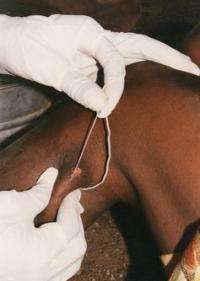
Filarial worm
Filarial worms are tiny roundworms that live in lymphatic and subcutaneous tissue, just below the skin.
Several species (for example Wuchereria bancrofti and Brugia malayi) cause lymphatic filariasis (LF), a disease seen in the tropics/sub-tropics of Africa, Asia, Western Pacific regions, South America and parts of the Caribbean, and commonly known as elephantiasis in its severest form.
In LF, microscopic larvae called microfilariae (MF) circulate in the blood. These are sucked up by feeding mosquitoes and, after further maturation, can transmit to another person when the mosquito feeds again. MF travel from the skin to the lymphatic system to develop into adults that can live for over five years. After mating, millions of MF are released back into the blood.
The lymphatic system maintains bodily fluid levels and helps to fight infections. In LF, adult worms living in lymphatic vessels and nodes cause damage resulting in fluid retention and swelling.
Most infected people don't show symptoms but some develop significant swelling, usually in the legs, after repeated exposure. Secondary skin infections that cause skin thickening and hardening are common.
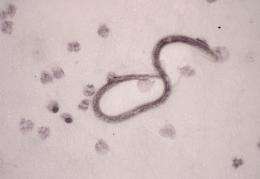
Men can also suffer a huge swelling of the scrotum. Severe LF is disfiguring and disabling, and carries social stigma.
Drugs are available but some irreversible damage needs surgery.
Other species of filarial worm include Onchocerca volvulus, which causes "river blindness" and occurs mostly in Africa.
Vandellia Cirrhosa
Vandellia cirrhosa or "candiru" is a member of the cat-fish family found in the Amazon. It's small (up to 5cm) and attaches to larger fish to feed on their blood using spines on its gill operculum.
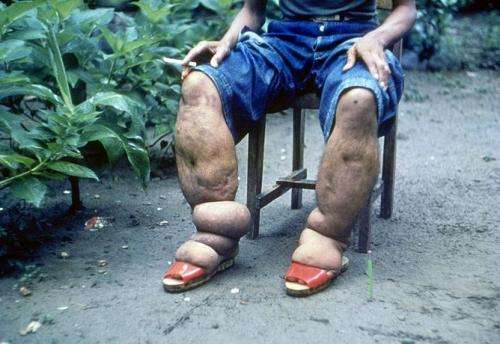
Candiru is infamous for reportedly swimming into urethral openings of unprotected bathers. The majority of reports are based on unverifiable historical accounts and one recent but unsubstantiated case from Brazil where a man claimed that a candiru jumped out of the water following the stream of his urine and into his penis.
Candiru attack is now largely considered an urban legend, however it may still be wise to wear a bathing costume!
Chigoe flea/Jiggers
Chigoe or sand fleas (Tunga penetrans) – or "jiggers" – are small ectoparasites (they live on the surface of the host). The fertilised females burrow into exposed skin, commonly on the toes/feet, to feed on blood and tissue fluid and lay their eggs.
Jiggers live in warm dry sand (ie beaches) and soil (paths, parks etc) in tropical and subtropical regions of the Americas, Africa and the Far East.
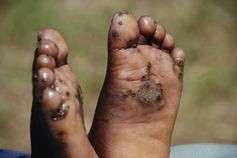
The embedded flea swells dramatically (up to the size of a pea!). This infestation resembles a blister with a black dot which is actually the legs, breathing apparatus and reproductive organs of the flea. After several weeks, eggs (there may be several hundred) begin to be laid and fall to the ground, hatching about three days later and emerging as adults 2-3 weeks later.
Pain and swelling are common even in single infestation and complications include secondary infections that can cause tetanus and gangrene and loss of nails and toes.
This story is published courtesy of The Conversation (under Creative Commons-Attribution/No derivatives).
![]()



















